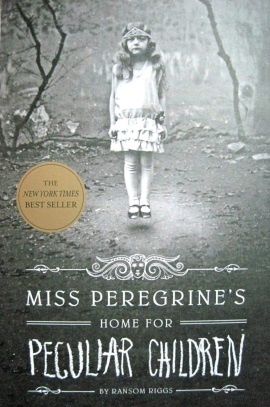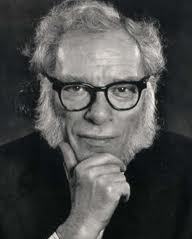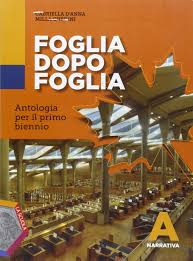
This project promotes open access materials and has been funded with support from the European Commission - Erasmus+ program. These materials reflect the views only of the author, and the Commission cannot be held responsible for any use which may be made of the information contained therein.
[Project Number: 2016-1-HR01-KA201-022159]
![]()
Title of Activity
Storyboard: very special characters
Description of educational activity
Duration: 4 hours
Pupils’ age: 14-16
Organization of the class of pupils: group work
Pupils' tasks: After students have read the novel" Miss Peregrine's Home for Peculiar Children", they will be divided into 4 groups, made up of 4 or 3 members; they will choose some sequences from the book in order to draw a few sketches with captions or a series of illustrations of the selected sequence that will eventually stand for the succession of the different framings in a multimedial, audio-visual production.
Support materials:
- Ferrara Mario Ramina Graziano- CLICK & NET (LDM) Laboratorio Tecnico Multimediale. Zanichelli Editore
- Andrea Balzola- Riccardo Pesce, STORYBOARD- Arte e tecnica tra lo script e il set. Dino Audino Editore
Evaluation and assessment method: Students will be asked to fill in a self-evaluation sheet regarding the final outcomes, in which the teacher will have to highlight the narrative elements through images: logical and narrative unity; creativity; efficacy of captions.
The visualisation of the text in sequences of images helps arouse students' interest in the analytical reading of the text and encourages them to reflect upon the descriptions to be pictured
Connection to curriculum
Grade: 2nd grade
Knowledge:
- Narrative techniques
- Basic structures of narrative texts
- Main literary genres
- Skimming and scanning
- Reflecting on reading
Skills:
- grasp the fundamental features of a literary text
- master language structures used in the texts
- understand the message
- understand and be aware of the means of the audiovisual communication.
Competences:
- reading
- undestanding and interpreting texts of different genres
- using the narrative strategies to turn a literary text into a sequence of images
- comparing a literary text with its filmed version
Bibliographic reference to be used during the activity
Italian version
Ransom Riggs - Miss Peregrine
La casa dei ragazzi speciali - Rizzoli,2016 (Versione italiana)
Editore: Rizzoli Collana: Rizzoli best
Anno edizione: 2016 Pagine: 383 p. ill. , Rilegato
ISBN-10: 8817090018 - ISBN-13: 978-8817090018

Short description of digital sources
A films has been made from Ransom Riggs'novel, directed byTim Burton e interpreted by Eva Green, Samuel L. Jackson, Asa Butterfield, Kim Dickens, Rupert Everett, Allison Janney, Ella Purnell, Terence Stamp, Judi Dench, Chris O'Dowd, Milo Parker.
- http://www.qlibri.it/narrativa-straniera/romanzi/la-casa-per-bambini-speciali-di-miss-peregrine/
- https://it.wikipedia.org/wiki/Miss_Peregrine_-_La_casa_dei_ragazzi_speciali
- http://www.cineblog.it/post/728870/miss-peregrine-la-casa-dei-ragazzi-speciali-18-curiosita-sul-film-di-tim-burton
- https://itunes.apple.com/it/movie/miss-peregrine-la-casa-dei-ragazzi-speciali/id1177688746
- https://www.youtube.com/watch?v=mAdpJw-MM-M
Results
The novel contains several black and white photos, printed on vintage yellowish paper. These pictures aroused the students' curiosity since they will also study photography and prepare storyboards as part of their curricula.e dello storyboard
Students have learnt how to single out similarities and differences between literary and cinematographic genres.
Gli studenti got engaged in reading the story and most of them have also read the other two stories featuring Miss Peregrine.
Recommendations
In order to produce a storyboard, it is fundamental that the students read the whole novel. Group work is an effective method to arouse students' motivation, to favour opinion exchanges and stimulate their creativity. Cooperative learning may also be useful. Group work strengthens the individual sense of responsibility and triggers the challenge to become passionate readers.
Book title
Key Item
Author
Isaac Asimov

Bibliographic information
Einaudi,1982
Links (adaptations, reviews, full texts etc.)
- https://it.wikipedia.org/wiki/Bibliografia_italiana_di_Isaac_Asimov
- http://www.barrington220.org/cms/lib8/IL01001296/Centricity/Domain/496/KeyItem.pdf
Theme
Science fiction
Short summary
Multivac, a huge and perfect computer, stops working. Two scientists try to detect the fault, but the machine appears to follow more complex procedures which will be revealed by the choice of a key word.
Why is the story appropriate for the targeted groups of RSP readers?
-
What are the distinguished readers interests reflected by this book/story?
Science fiction sparks young readers' imagination, thanks to the several film productions based on this genre. After reading such stories, teenagers are often eager to watch sci-fi films, such as Base Runner, directed by Ridley Scott.
Why is this story motivational for the pupils?
The short story is written in a simple and clear language. Although this text was published 50 years ago, the young generation find elements in common with our modern society.
Is there a historical, political, multi/inter cultural, migrant or similar context recognized in this book/story?
No, there isn't.
Is there a principle of inclusion reflected in this book/story and does it promotes understanding of cultural diversities and heritage?
No, there isn't.
Book title
I, Robot
Author
Isaac Asimov

Bibliographic information
Isaac Asimov- Io, robot - Edizioni Mondadori - 2003
Links (adaptations, reviews, full texts etc.)
- https://docs.google.com/viewer?a=v&pid=sites&srcid=ZGVmYXVsdGRvbWFpbnxlcHViaXRhbGlhbm98Z3g6NjM2MmNiNGRkZDhiMjJmZg
- http://ilove-books.blogspot.it/2012/12/recensione-io-robot-di-isaac-asimov.html
Theme
Science fiction
Short summary
In the first part the protagonists are two scientists and their stories are connected to the contrasts in the three laws of robotics. In the second part the protagonist is a robopsychologist who manages to solve the conflicts in the robots' brains.
Why is the story appropriate for the targeted groups of RSP readers?
Science fiction is appreciated by teenagers. The style of the stories is fluent; the syntax is linear and the lexis is simple and clear, but especially the story is gripping.
What are the distinguished readers interests reflected by this book/story?
The story analyses the world of robots and robotics that have always stimulated teenagers' fantasy and interest.
Why is this story motivational for the pupils?
Because it develops fantasy and creativity and makes us reflect upon a future which is approaching fast.
Is there a historical, political, multi/inter cultural, migrant or similar context recognized in this book/story?
There is the theme of psychology, of its limits and possible dangers.
Is there a principle of inclusion reflected in this book/story and does it promotes understanding of cultural diversities and heritage?
Even the robot is seen as "different" and in some passages, the story teaches us to understand and receive those who are not like us.
Title of Activity
The science fiction genre: literature and cinema
Description of educational activity
Duration: 5 hours
Pupils’ age: 14-16
Organization of the class of pupils: group work
Pupils' tasks: Pre-requisite for the students is having read some science fiction short stories. Students are asked to read aloud in turns, then a debate is started on characteristics and trends of the science fiction genre. Students are invited to collect data on filmography, from “Le voyage dans la lune” by G. Mèliés (1902) to the latest films. Each student’s task is to trace the original poster of the film on the Internet and download it on a memory stick. All posters files with a brief presentation of the film will make up a chronological route of the genre for a power point presentation.
Support materials: The teacher proposes again F. Brown’s short stories “Pattern” and “Sentry”, plus new stories, such as “The Pedestrian” “ by Ray Bradbury from “le meraviglie del possibile”; “Key Word” and the stories from “I Robot” by I. Asimov.
Evaluation and assessment method: The evaluation method is based on the observation of the cooperative behaviour of students who work together on a project, each of them giving their contribution. Each student will feel personally involved in the learning process, as he will be the one to choose the film and write its presentation.
Connection to curriculum
Grade: 2nd grade
Knowledge:
- The science fiction genre and narrative structures and techniques of the genre
- Authors and stories of the science fiction genre: I. Asimov, F. Brown, R. Bradbury
- Science fiction cinema.
Skills:
- Grasping the specific traits of a literary text
- Mastering the linguistic structures in the texts
- Understanding the message inside
- Understanding and producing audio-visual products.
Competences:
- Reading, understanding and interpreting written texts of different kinds, and in particular, using the narrative instruments to interpret a film
- Making comparisons between literary texts and films
Bibliographic reference to be used during the activity
The science fiction “Key Item” by I.Asimov can be found in the Italian anthologies of “Biennio”, as for example in the text by Gabriella D’Anna, Milla ghedini, “Foglia dopo foglia” vol. A, La Scuola Editore (pag. 273-275)
ISBN 978-88-3504178-8
n. pagine 736
2015

Digital sources
There are many sites on the Internet dedicated to Asimov, science fiction and films of that genre. Here are those consulted and given to students:
- http://www.laterza.it/indici/9788842112020_capitolo.pdf
- https://oggiscienza.it/2014/10/22/il-cinema-di-fantascienza/
- http://www.mymovies.it/film/fantascienza/
- http://www.film.it/film/generi/genere/film-fantascienza/
Results
Students have learned to appreciate the science fiction genre; they got so passionate about reading this genre that they are going to read the short stories collections of the three authors (Asimov, Bradbury, Brown). Students already knew the film genre, but thanks to the project, they have expanded their knowledge, sharpened their skills of analytical observation and made textual competences better in the comparison between the two languages: Cinema and Literature
Recommendations
Motivating students means indulging their tastes and encouraging their personal choices; the science fiction genre is one of the favourite among the young generations of readers. On the other hand, the film language offers many different catchy stimuli especially thanks to the use of special effects in science fiction. Encouraging reading narrative texts through the relationship between cinema and literature has given tangible results: finding out that behind a film there is reference literature has triggered curiosity towards reading.
Contact
X gimnazija ''Ivan Supek''
Ul. Vjekoslava Klaića 7
10000
Zagreb
E-mail: partners@handbook4rspreaders.org










